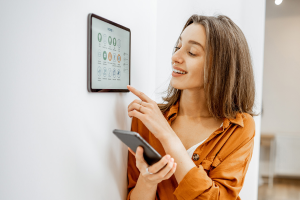She was texting and driving when she hit my kid. No, it wasn’t a careless teenager or a group of kids horsing around. It was a suburban mom in her mid-40s, driving an SUV and looking at her phone. My son was stopped at an intersection waiting for the light to change. She never slowed down before slamming into the back of him.
One concussion, four days of lost work, and a series of car repairs later, and my son (and his mom) will be the first to tell you that there isn’t a text, post, or tweet that is worth the physical and emotional toll of these past few weeks. We were fortunate. Sadly, other distracted driving accidents end far worse.
According to the Centers for Disease Control and Prevention in 2011, 3,331 people were killed in crashes involving a distracted driver, compared to 3,267 in 2010. An additional, 387,000 people were injured in motor vehicle crashes involving a distracted driver in 2011, compared to 416,000 people injured in 2010.
Here’s the jaw dropper: A recent AT& T survey shows that it’s adults, not teens (as might be suspected) that lead the trend on texting and driving. Almost half of all adults admit to texting while driving compared with 43% of teenagers. Of those polled, more than 98% of adults — almost all of them — admit they know it’s wrong. That survey revealed that 41% of teens say they’ve seen their parents text and drive too.
There is progress being made in the area of distracted driving with most but not all states prohibiting cell phone use while driving. There are also indications that devices will leapfrog apps altogether and come out with built in driver protection. Recent rumors have Apple coming out with a “driver handheld computing device lock-out” system that detects and blocks the use of text messaging or other Smartphone functions when driving.
Here are just a few apps (the number is always growing) and shortcuts that we hope parents will take the time to explore, download and implement. You can also take the “It Can Wait” pledge and share it with your family. Remember, it’s through the example—not the words—of parents that kids learn.
Shortcuts & Apps to Avoid Distracted Driving
Put your phone in the trunk. That’s right, the #1 defense against distracted driving is to avoid it completely. If you don’t trust yourself to put your phone away while behind the wheel, put it in your trunk before you start your car.
iOS Shortcut & Android Shortcut is a way to program a custom message into your own phone that will auto-respond to anyone texting while you are driving. Simply follow the instructions to the right (in the blue boxes) for your phone and post an auto-reply while you are driving.
DriveMode is from AT&T and automatically launches once the car is moving at more than 25 mph. DriveMode responds to all incoming texts and emails, and lets the sender know the recipient is driving and will get back to them. It is available for Androids and Blackberries. The app is free.
DriveOff is an Android app that detects when drivers are traveling over 10 mph. The app shuts off apps and blocks incoming calls and texts. The app is free.
DriveScribe monitors a driver’s speed, and blocks texts and calls while the car is in motion. The app will also tell your teen driver to slow down if they are going too fast. The driver must activate the app “start trip” before driving, then “end trip” when they arrive at their destination. It works on iOS and Androids. The app is free.
DriveSafe.ly is a mobile application that reads text messages and emails aloud in real time and automatically responds without drivers touching the mobile phone and works for both iOS and androids. The app is free.
Sure, there are apps but the #1 defense against texting and driving is to lay down the “no texting and driving” rule in your family, set consequences, then mindfully—and consistently—model the lost art of safe driving for your kids.
What are your favorite apps (or rules) to keep yourself from texting and driving? Please share!












